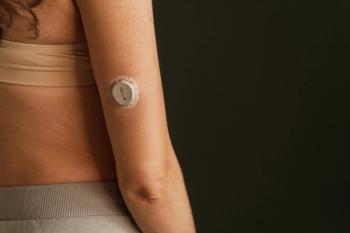
10 Pillars of Health Supporting Patients
The best way to reduce health care spending is to teach patients how to optimize their health and slow the aging process.
Americans spend an enormous amount of money on health care, so many stakeholders see this area as an opportunity for improvement.
I believe that the best way to reduce health care spending is to teach patients how to optimize their health and slow the aging process. Health care providers should explain to their patients that fortifying the pillars of health will produce a peak state of energy, vitality, strength, stamina, and physical appearance.
All providers automatically try to fortify the pillars of health, because it is what we are taught to do in school. But the problem is that some patients don’t see the big picture, so they don’t fully cooperate with their providers.
Throughout my career as a pharmacist, I have found that the more patients understand, the more they cooperate.
Imagine a patient standing on top of a ladder that has 10 rungs, which we’ll call the 10 pillars of health. If those pillars are not strong, then the patient may fall down, get sick, or age at an accelerated rate.
To me, the 10 pillars of health are as follows:
1. Optimal vitamin and mineral levels
Patients should only take vitamins and supplements to restore and prevent dietary deficiencies. A simple quiz could identify the specific populations at risk for vitamin deficiency and then point them in the direction of appropriate supplementation.
2. Inflammation reduced or eliminated from the body
There are hidden allergens all around us in the form of artificial sweeteners, nuts, and processed flour. Fortunately, dieticians have come up with a specific process to detect and eliminate hidden dietary allergens.
Another way to reduce systemic inflammation is to maintain impeccable oral care. Bacteria seep into the bloodstream through the delicate and permeable membranes in our mouth and gums. These bacteria cause low-grade and systemic inflammation that is associated with so many costly diseases.
3. Plenty of sleep
Rest allows the body to restore itself and regenerate any wear and tear that it endures throughout the day. As we sleep, our bodies release the growth hormone and repair hormone. As we age, we produce less growth hormone, and so we can no longer keep up with the repairs that our body demands.
Patients can be taught to optimize the natural release of growth hormone though amino acid consumption and other techniques. They can also be taught good sleep hygiene.
4. Optimistic outlook on life
Miracles occur when patients maintain a loving and compassion attitude. There is a mind-body connection that can create or dissolve diseases. Patients should be taught to explore this avenue if they want a miracle.
5. Avoidiance of substance abuse
Drugs, excessive alcohol, lack of sleep, and excessive exercise wear the body down and leave it susceptible to opportunistic infections.
6. High water consumption
Kidney failure from dehydration is all too common and easily avoided.
7. Appropriate medication use
Convince patients not to take any unnecessary pills that have not been prescribed. Even aspirin can be deadly if it is used inappropriately. Patients must be taught to listen to their health care professionals who can determine what is best for them.
8. Healthy gastrointestinal tract
A healthy gut is associated with an improved immune system and state of mind.
Eat lots of fiber and drink plenty of water to keep things moving. Consume yogurts and other foods that are rich in probiotics. Eliminating waste in a timely, efficient manner is the goal.
Patients can be taught which probiotics have been proven in the medical literature to reduce the incidences of respitory viruses. In the hospital, we see patients with hepatic encephalopthy, and we improve their state of mind by sterilizing the gut with rifixamin and emptying it with lactulose.
This simple act of attending to the gut clears up the mind. Healthy intestines mean better mood, better sleep, better concentration, and better immune system.
9. Low blood sugar
Too much sugar in the bloodstream causes damage to precious nerves and small blood vessels over time. It is like intricate machine parts getting covered with a sticky, dirty oil.
Chronically low blood sugar will keep the delicate blood vessels and nerves in optimal condition.
10. Medication adherence
Convince patients to take their prescribed medications. If patients have high blood pressure, high cholesterol, or high blood sugar, then they are aging at an accelerated rate.
The medical literature tells us the statistical probability of extending lives based on drug choices. We need our patients to trust our decisions enough to take the medications prescribed to them.
I believe that many diseases can be cured by fortifying these pillars of health. Even complicated patients who present with a long list of symptoms can be simplified with this method.
We do not need expensive tests to tell us what we already know, which is that the pillars of health are not right. Fortifying the pillars of health first, and then run expensive tests to see what still needs to be fixed.
We cannot fortify the pillars of health unless patients cooperate with us. The key to making lasting changes in patients’ behavior is to teach them in such a way that is engaging and persuasive. Words need to be used efficiently and carefully chosen.
If patients lose interest, become overwhelmed and confused, or simply do not believe us, then our efforts are in vain. The more patients understand their health, the more they will cooperate with us.
Teach them well, and show them the big picture.
Newsletter
Stay informed on drug updates, treatment guidelines, and pharmacy practice trends—subscribe to Pharmacy Times for weekly clinical insights.

















































































































































































































